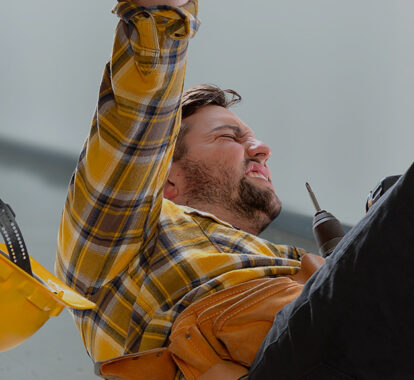Avoiding Sprains and Strains to Ensure Workplace Safety
January 24, 2013
Safety in the workplace is extremely important, but sometimes repetitive job functions cause employees to overlook common safety measures that lead to injury, more specifically, sprains and strains. Practicing preventative measures daily can help employees avoid painful accidents that require time away from work and potentially lost wages for both the employer and the employee.
In an attempt to increase workplace safety, we encourage employees to follow preventative measures to avoid accidents that lead to strains and sprains on the job. Our physicians stress the importance of prevention with the notion that unlike many illnesses, workplace accidents can (in most instances), be avoided.
Lifting, pushing, and overreaching are the most common causes of strains and sprains. Any job that requires an employee to sit or stand, or bent in an awkward position for long periods of time can cause excess stress and strain on certain muscles. Most strains and sprains affect the back, arms, and shoulders, while many of these occur because of improper handling of materials.
Some of the most important safety measures to help avoid strains and sprains on the job include the following:
-Lift correctly by bending at the knees, lifting with leg strength, not the back.
-Carry loads close to the body. Injuries can occur when workers try to pull or lift a heavy or awkward object without help or attempt to lift an object while twisting from the waist.
-When carrying a load, avoid lifting upward unnecessarily. Keep as much of the load as possible at waist level.
-Get help with heavy loads. Don’t try to move or lift an object alone that’s too heavy. Instead of lifting an 80-pound load, if possible, break it down into smaller parts. If the load can’t be broken down, find help from a mechanical device or lift it with another worker.
-Make sure moving equipment works properly or it will cause unnecessary strain just trying to get it to work. If the wheels on a cart are not aligned, it is more likely to strain the arms, shoulders, and back.
-Change work positions frequently. Chronic strain due to an unchanging work position can weaken the back, arms, and shoulders. Proper ergonomics is important so working heights should be adjusted to prevent slumping or excessive reaching.
-Stretch during the day to increase flexibility. Take breaks letting shoulders and neck muscles go limp; swiveling the head or arms or flexing hands and fingers. When chronic strain happens, muscles become less able to withstand strenuous activity and grow more prone to injury.
It’s important to take care of the entire body with exercise, proper posture, a sensible diet and adequate rest. If muscles or ligaments have weakened over time from lack of exercise or age, strain or sprains are more likely than if an employee is physically fit.
We devote extensive resources to our occupational medicine program, including the care of injured workers and we strongly support early return to work by utilizing modified duty on the job to facilitate convalescence and re-integration into the workplace. All of our clinics are staffed to help with workplace injuries, but by following the preventative measures outlined above, we hope that you are able to avoid careless sprains and strains, staying healthy, capable and strong.




